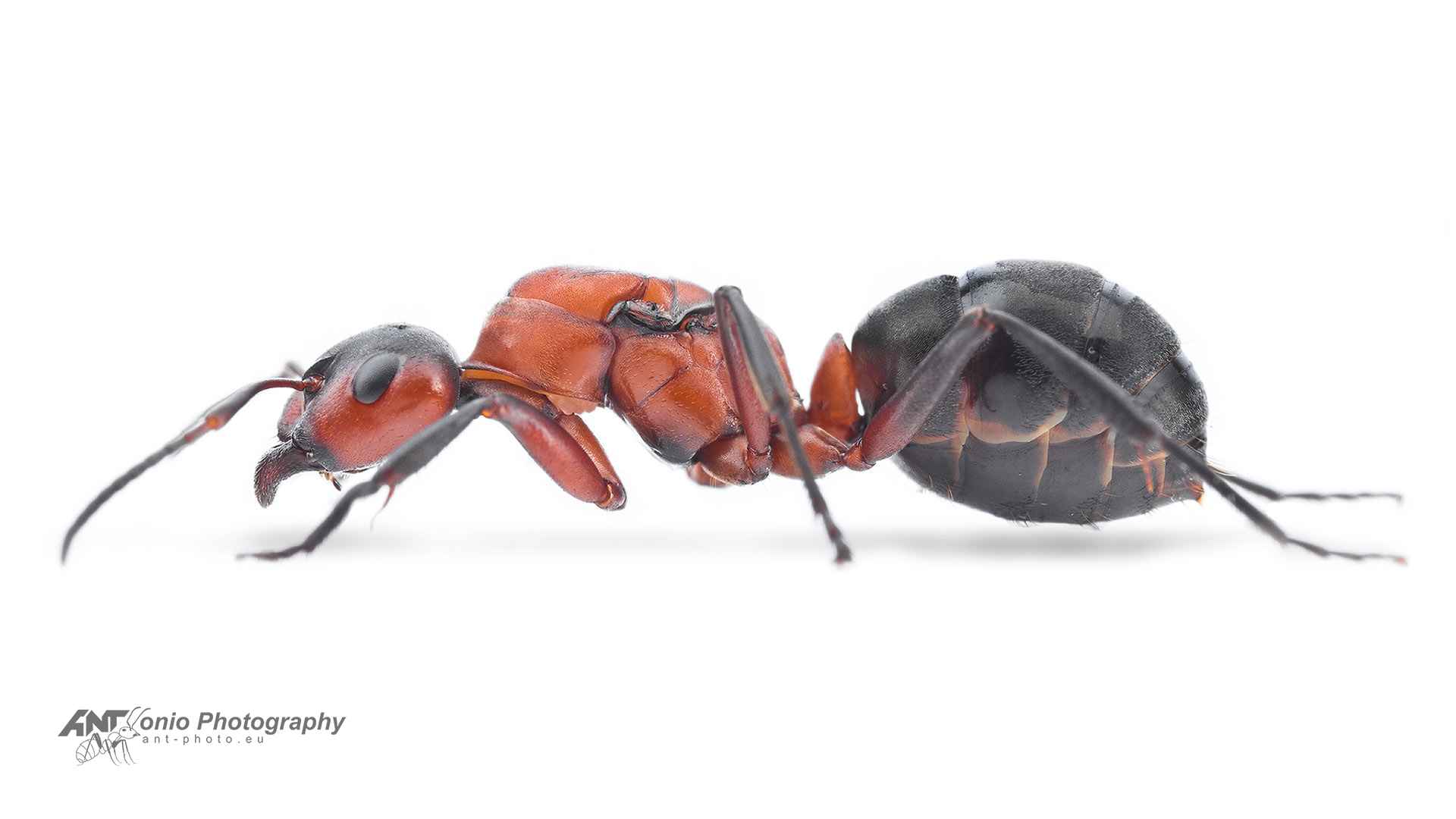Photo Credit: The amazing image used for the main picture in this post was taken by Kamil Stajniak from Poland. He has generously given us permission to use his photographs on our site. You can check out his other photographs on his website.
The Colorful Life of Blood Red Ants
Imagine an ant as red as a ruby, bustling around with energy. That’s the Blood Red Ant for you! These ants are not only interesting to look at but also have some really cool behaviors and a key role in their ecosystemsAn ecosystem is a community of living organisms, like insects and birds, and non-living components, like water and rocks, that interact with each other in a specific area. Learn More. Put on your explorer hat, and let’s learn all about the life of the Blood Red Ant, from their fiery color to their busy colony life.
Spotting a Blood Red Ant
The Blood Red Ant, known scientifically as Formica sanguinea, is a medium-sized ant, measuring about 4 to 8 mm in length. They stand out with their bright red color, which can vary from a deep, dark red to a lighter, more vibrant hue. This striking color isn’t just for show; it helps them camouflage in certain environments like red soil or among fallen leaves.
Building a Home in Nature
Blood Red Ants are expert builders. They make their nests in open areas like fields or forest edges, often choosing sunny spots. Their homes are made in the soil, forming large mounds that are a hive of activity with many ants coming and going.
A Bustling Ant Colony
Inside a Blood Red Ant colony, there’s a queen, the mother of all the ants, and many worker ants, who are all female. These worker ants have various jobs like finding food, caring for the ant babies, and expanding and protecting the nest. It’s a busy world where every ant plays a part in the colony’s success.
What Do Blood Red Ants Eat?
These ants are omnivoresOmnivores are animals that eat both plants and meat. They are like the flexible eaters of the animal kingdom. Just as you can have a salad for lunch and a hamburger for dinner, omnivores enjoy a variety of foods. Learn More, which means they eat both plants and animals. They enjoy a diet of insects, sweet substances like nectar, and honeydew produced by aphids. Their foraging habits help in controlling pest populations in gardens and forests, making them important in maintaining ecological balance.
The Environmental Role of Blood Red Ants
Blood Red Ants play several crucial roles in their environment. They aid in seed dispersal, which helps plants grow, and their nests aerate the soil, improving its quality. These ants are also a food source for many birds and other wildlife, making them a key part of the food chain.
Interactions in the Wild
While Blood Red Ants have a mutualistic relationship with aphids, they also face threats from predators like birds and larger insects. They have to compete with other ant species for resources and space, which can lead to interesting dynamics in the ant world.
Expanding the Colony
To grow their colonies, Blood Red Ants have a unique way of reproducing. Winged males and new queens take flight to mate, and after this, the new queens establish new colonies, ensuring the continuation and spread of their species.
Survival Strategies
Blood Red Ants have developed several adaptations for survival. Their bright coloration provides camouflage, and their strong colony structure helps them efficiently gather resources and defend against threats.
Challenges and Adaptation
Despite their resilience, Blood Red Ants face challenges like habitat loss and climate change. However, their adaptability allows them to survive in different environments, making them a successful species in their ecological niche.
The Blood Red Ant is a small but mighty creature of the insect world. Their vibrant color, complex social structure, and significant roles in the ecosystem make them fascinating subjects of study. From pollination to pest control, these ants contribute to the health of their environment in numerous ways.




